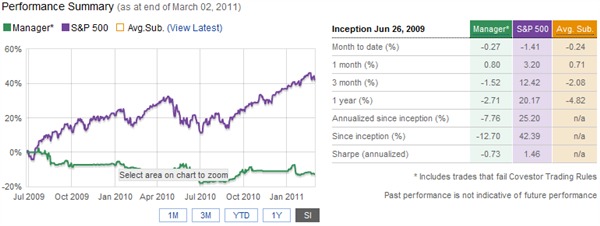Jeremy Schwartz, CFA, Director of Research, WisdomTree Asset Management
On a recent “Behind the Markets” podcast, we spoke about fixed income strategy and outlook following the Federal Reserve (Fed) meeting with Kevin Flanagan, Senior Fixed Income Strategist at WisdomTree, as well as market dynamics and portfolio strategy with Jared Dillian, author of the Daily Dirtnap.
Flanagan pointed out the Fed policy statement last week ignored any discussion of the slowing housing data that resulted from the rise in mortgage rates (conventional 30-year rates are now 5%). Flanagan interpreted the Fed statement as sending a signal that another interest rate hike is coming in December and that we can potentially expect two to three more hikes next year.

Based on the Fed “dots,” Flanagan sees room for four more rate hikes, so in that context we also discussed Flanagan’s high-conviction fixed income strategy ideas.
Flanagan believes floating rate Treasuries—which are instruments whose rates reset every week with the three-month T-bill auction—offer compelling value.
In a typical audience, approximately two-thirds of the people Flanagan speaks with still do not even know this asset class and bond exist because the Fed just started issuing these securities in 2014.
- If you believe the Fed is raising rates three, four or even five times between now and the end of 2020, Flanagan suggests floating rate Treasuries are where you want to be positioned. Currently, rates are 2.35% on securities with a one-week duration and the highest-quality Treasury paper. Flanagan sees these rates going up to 3.25% sometime in 2019—which is approximately where the 10-year bond is today.
- We discussed how floating rate Treasuries were the first issuance from the government since Treasury Inflation-Protected Securities (TIPS), and TIPS tend to be longer, thus resulting in negative performance in 2018 with their duration and real rates rising. Floating rate Treasuries are another instrument that can protect inflation—without duration risk.
Whither Value?
Dillian echoed comments we’ve heard recently on our podcast about seeing a sustained shift from a momentum– and growth-led market to a value regime of outperformance over the next five years.
Dillian thinks momentum might be dead as a factor—and his gut feeling is that there has been a change in the trend.
He sees fundamental issues coming to some of big tech companies, potentially with government pressure and regulation coming to big tech.
Money Magnet
Dillian sees the U.S. as being a destination for foreign capital given how high our real interest rates are compared with those in the rest of the world, trumping the valuation case to go international.
He is still looking for opportunities there but sees risk of political negativity instead of positive catalysts.
Corporate Credit
Dillian does not think residential real estate would be the next source of a global financial crisis—but, rather, the increase in U.S. corporate credit.
Dillian sees $13.5 trillion in corporate debt outstanding, and the median rated bond corporate used to be an A and now it is BBB-. Dillian sees the median bond being junk-rated pretty soon.
This ties back to some of Flanagan’s advice on the show to get more discerning with fundamental credit strategies instead of just buying market cap-weighted credit beta.
35/65 Portfolio
Dillian described a portfolio that he thinks should be the standard for more personal portfolios that flips the standard “60/40” equity/bond mix on its head to be the 35/65 portfolio.
He sees this as being the ideal portfolio, regardless of age because it delivers a more optimal Sharpe ratio or risk-adjusted return.
He sees this as something portfolio investors can stick with behaviorally—it manages their ability to compound their wealth as long as possible.
If people believe this isn’t going to allow them to retire in time with lower expected returns, Dillian suggests to prepare the old-fashioned way: by saving more.
He sees people being overly allocated to stocks and under-allocated to real assets like commodities, and, in that case, allocations like a 30/60/10 equity/bond/commodity would have merit.
This was a great conversation on macro dynamics with Dillian and Flanagan. To hear more, please listen to the full podcast in the link below.
Versions of this article first appeared on the WisdomTree blog and SeekingAlpha on November 13, 2018.
Photo Credit: Alexander Amatosi via Flickr Creative Commons
Disclosure: Certain of the information contained in this article is based upon forward-looking statements, information and opinions, including descriptions of anticipated market changes and expectations of future activity. WisdomTree believes that such statements, information, and opinions are based upon reasonable estimates and assumptions. However, forward-looking statements, information and opinions are inherently uncertain and actual events or results may differ materially from those reflected in the forward-looking statements. Therefore, undue reliance should not be placed on such forward-looking statements, information and opinions.
About the Author: Jeremy Schwartz, CFA, Director of Research, WisdomTree Asset Management is responsible for the WisdomTree equity index construction process and oversees research across the WisdomTree family. Prior to joining WisdomTree, Jeremy was Professor Jeremy Siegel’s head research assistant and helped with the research and writing of Stocks for the Long Run and The Future for Investors. He is also co-author of the Financial Analysts Journal paper “What Happened to the Original Stocks in the S&P 500?” Jeremy is a graduate of The Wharton School of the University of Pennsylvania and currently stays involved with Wharton by hosting the Wharton Business Radio program “Behind the Markets” on SiriusXM 111.



